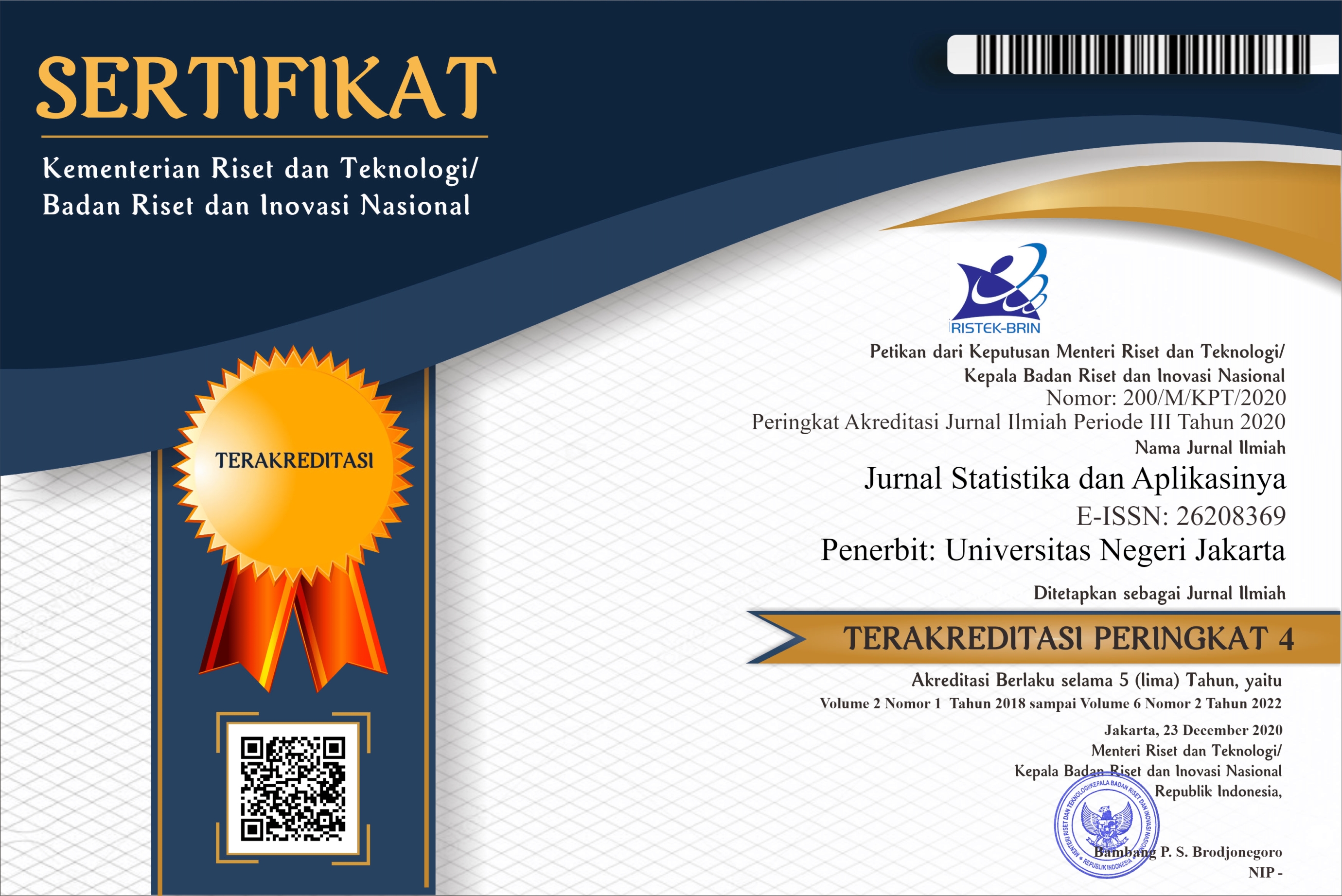Determinants of Prehypertension and Hypertension Among Indonesian Productive-Age Population Using Ordinal Logistic Regression With Non-Proportional Odds Model
DOI:
https://doi.org/10.21009/JSA.08110Keywords:
prehypertension, hypertension, productive age population, ordinal logistic regression, non-proportional odds modelAbstract
Non-communicable diseases (NCDs) account for the majority of deaths in Indonesia, especially cardiovascular diseases. The main risk factor for cardiovascular disease is hypertension, which is also a disease with the highest increase in prevalence compared to other NCDs. The risk of cardiovascular disease doubles for every increase in blood pressure of 20/10 mmHg and starts from a pressure of 115/75 mmHg. Therefore, a prehypertension category was introduced which also aims to prevent the development of hypertension. The prevalence of hypertension in the majority of the productive age population (15─64 years) has exceeded the RPJMN 2015─2019 target, even though Indonesia is currently in the demographic bonus period. This research aims to obtain a general picture and factors that influence blood pressure status in the productive age population in Indonesia in 2018. The data used comes from Riskesdas which is integrated with Susenas in 2018. The results of the ordinal logistic regression analysis (non-proportional odds model) show that consumption of fruit and vegetables, consumption of fatty foods, consumption of salty foods, consumption of seasonings, alcohol consumption, smoking status, physical activity, education level, employment status, poverty status, residence, age, gender, and body mass index have a significant effect on blood pressure status in the productive age population.






